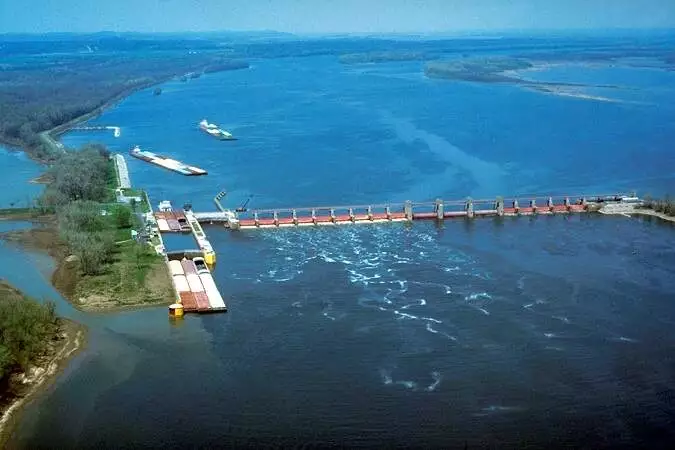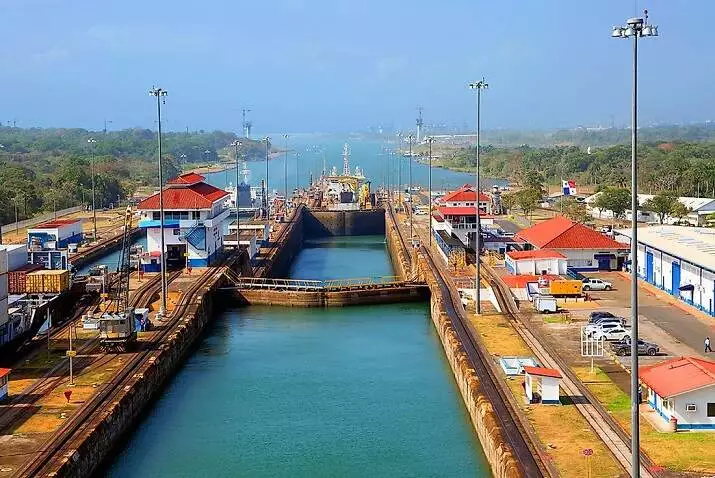When taking exams like the boat Ed exam, marine knowledge test, or a multiple-choice Quizlet you’re often asked the question “which class of boats has priority when using river locks?” A lot of people get confused about this question.
Even though Boating has become a popular hobby, not all boaters are aware of the boat hierarchy, the type of boat that gets priority over another depends on its class.
The size and number of boats affect the speed of passage through locks, so it is important to understand how each class works.
When you’re boating along a canal or a river, at some point you will come across a lock. A lock is where the canal or river goes up and down, and the water levels change.
You have to know which boat has priority over another when going through these locks. A commercial boat has priority over a recreational boat in most cases.
With the mere fact that commercial boats pay more tolls and carry heavy cargo, they tend to have priority in most cases.
Recreational boats are seen as low risk, so they are given the right of way only if the commercial boat is not releasing an obstruction or turning.
What Is A River Lock?
A river lock is a device that regulates the flow of water in a river or canal and it’s typically used when there is a difference in height between two waterways that are connected by a canal. The water flows from the higher level to the lower level, but only when the lock has been opened.
River lock can also be explained as a type of watertight gate that is used to create a continuous waterway, which can be either permanently open or closed. They are used as a part of a canal system that allows boats to pass from one level of the canal to another.
What Is The Purpose Of River Locks?
River locks are used to change or control the water level in a canal or river to allow boats to go up and down the waterway. They can be used for different purposes, such as regulating water flow, providing passage for vessels, or powering hydroelectric generators.
They allow barges to travel up or down a river without having to be disconnected from their towpath or suffer damage from the difference in water levels.
How Do River Locks Work?
Locks on a river work by using a gate that is raised or lowered to change how much water can pass through it at any given time.
The gates are controlled by a lock keeper who is responsible for opening and closing them, having the ability to stop or speed up the flow of water.
A river lock uses dams to make it easier for vessels to cross different water levels, like in the case of the Panama Canal.
This system uses multiple dams to create all sorts of water levels; these dams are controlled by large gates that can be opened and closed to allow the passage of vessels.
Which Class Of Boats Has Priority When Using River Locks?
Commercial boats have priority over other classes of boats in most cases, and right from the beginning, river locks were specifically created for these commercial boats. Most people also believe commercial boats are more important to the economy, that’s why the priority.
What Sound Should You Use To Signal The Attendant That You Want To Pass Through The River Lock?
The sound that is used to send a signal to the attendant that you want to pass through the lock is a prolonged blast followed by a shorter blast.
The attendant will then use a flashing light system, allowing you to proceed through the lock. Also, a signal can be sent by blowing a horn or sounding an air horn, which will alert the attendant of your intention to pass through the lock.
You can as well use a VHF marine radio to communicate with the attendant letting them know you want to pass through the lock.
Which Color Of Light Shows That It’s Safe To Enter The River Lock?
The green light signifies that it is safe to enter the river lock; It is usually located at the entrance of the lock and it shows that there are no other vessels or obstructions in front of it.
Some locks have a red light which means that you are not allowed to enter the lock, The green light means that there is enough water in the lock to allow boats to enter.
If the light is red, it means that there isn’t enough water in the lock and boats cannot enter. Generally speaking, a green and amber flashing light means it’s safe to enter, while red means you have to hold.
Is It Really Important To Understand How River Locks Passage Works?
Yes, every boater should understand how river locks work, they’re important for many reasons as mentioned earlier;
They provide passage for boats to go up or downstream, they control the water level, and they protect the environment.
The river lock system is an intricate part of the functioning of a river, they allow boats to go upstream or downstream by controlling the water level and providing passage for vessels that cannot go through rapids or shallow waters.
It is a common misconception that a river lock is a gate that opens and closes. In reality, the gates are the navigable openings in the walls of the locks. These gates are used to control water levels within the lock, so boats can move between different levels on the canal.
River locks passage is an important part of shipping and navigation, but it can be difficult to understand without some background knowledge about how they work.
The main function of a river lock is to allow boats to pass between two points on a river or canal with different water levels. The boat enters at one point and leaves at another point at a higher or lower level than when it entered.
Helpful Tips On How To Pass Through River Locks
- When passing through river locks, you should be careful and have some patience to allow the right boat to pass through.
- Pass through the locks slowly in order to prevent bumps from damaging your boat.
- You need to have an expert on board when passing through locks.
- Ensure that your boat is away from gates and cills.
- You have to be mindful when the water enters and leaves the dock because your boat can bang about.
- Your eyes should be on slippery surfaces when you push to open the gates.
- There are unguarded drops at the lockside, you need to keep an eye on them.
- If you want to offer help to another boater, you should consider asking them if they need help with the operations first.
- Make sure you have distinct signals so that you can communicate quickly and effectively.
Conclusion
Locks are used all over the world to make it possible for boats to go up and down steep inclines; the lock system works by water levels on either side of the boat is different, so that the boat doesn’t float out of the lock.
Safety precautions must be taken when approaching a lock, these include slowing down your speed and checking all around you for other boats, and other safety measures mentioned earlier, you should abide by them in order to stay safe on the water.
See also: What Should You Do Before Firing A Shot From A Small Boat?

Ever wondered how you can have a cruising boat without getting into financial problems? The answer is here. That is the reason why we set up this blog to share with you, safety tips, answers to questions that have to do with fishing and hunting. You are going to love it!
Hey! I am Armstrong!

